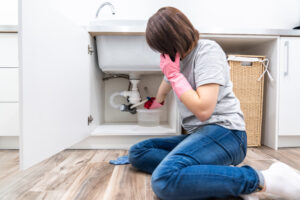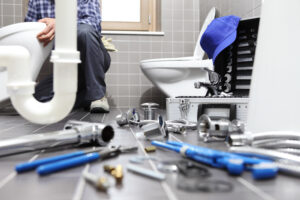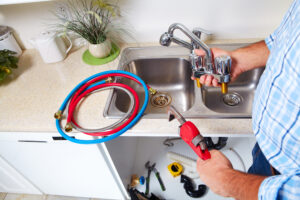There’s a lot to love about living in Colorado Springs.
The region is characterized by breathtaking mountain views and a unique climate.
These conditions offer opportunities for indulging in vibrant outdoor adventures.
Despite all these things to love about this place, the region experiences very cold temperatures, especially during winter.
One of the biggest challenges that homeowners have to deal with here is freeze-thaw cycles.
This entails rapid temperature shifts.
The complication with these cycles is that they bring the temperature down until the water freezes.

Frozen Water Pipe In Colorado Springs, CO
This leads to expansion and damage, hence placing your drainage at a very high risk. Since these are occurrences that you don’t want to experience, it makes sense to reinforce your home’s supply system. This article gives tips on how to do exactly that.
What are Freeze-Thaw Cycles
They are triggered when temperatures fluctuate between freezing and above-freezing points. This makes the water to solidify and expand. They are quite common in Colorado because the region experiences extreme thermal changes, especially during winter.
The expansion that happens places too much pressure on your piping infrastructure and could even lead to cracks and bursts. This is most likely to happen on exposed supply lines or those with insufficient insulation.
How to Safeguard Your Springs Home Pipes
Insulate
As previously mentioned, inefficiently protected pipes are most vulnerable to freeze-thaw cycles. The reason is that they are not able to maintain constant temperatures. It’s therefore very important to contemplate insulating. This significantly contributes to very stable levels. As a result, the possibilities of internal freezing are significantly reduced.
As you do the installation, remember to pay more attention to the ones located in unheated areas such as attics and garages. You should also focus more on the ones in the lower levels of your house and crawl spaces. These ones are highly sensitive to temperature changes and need padding, heat tape, or fiberglass sleeves.
Open Cabinet Doors
In those places where supply lines are located within cabinets like kitchens and bathrooms, contemplate opening the cabinet doors. This helps encourage warm air movement. Once this happens, the supply lines won’t get too cold or get to freezing levels.
This technique works great, especially for the ones located along exterior walls. This is because while here, they are more predisposed to dropping temperatures.
If you happen to detect a cold snap, contemplate leaving the cabinet doors open overnight. This helps provide much-needed extra protection. For the best possible results, consider combining this step with other preventive measures mentioned in this article.
Seal Gaps and Cracks
If your home has many gaps and cracks, then you should know that cold air could easily seep inside. Once this happens, there will be a very huge possibility of experiencing freezing. This is because even the tiniest of openings could lead to freezing conditions in your supply system. To avoid this, consider inspecting places where waterlines enter the house and patch up any crevices that you see.
Implement caulk or weather stripping to patch up fissures around those areas where waterlines enter the house. By taking these actions, you can be able to maintain warmth around your supply system and minimize the possibility of costly damage.
Let Faucets Drip
This method might look and sound simple but it gets the job done in preventing freeze-thaw cycles. The reason behind this is that keeping taps slightly open maintains water movement. Since water is always flowing, chances of freezing are reduced significantly.
This technique also works great because it relieves pressure buildup. This goes a long way in preventing the likelihood of bursting in case ice forms. As you make use of this method, consider focusing on those faucets connected to waterlines, which run along exterior surfaces or in cold-exposed areas.
If you are worried that your bills will increase, don’t be. This is because you will only pay a small price, which cannot be compared to the cost of repairing your water supply framework if the pipes happen to burst.
Freeze-thaw cycles in Colorado Springs can wreak havoc on your home’s piping network. To prevent this from happening, consider implementing the aforementioned tips and tricks. Insulating pipes, letting faucets drip, opening cabinet doors, and sealing gaps and cracks can go a long way in minimizing the chances of your water supply framework freezing. You should also consider reaching out to professional plumbers to inspect your plumbing system and make sure it’s well-prepared for the cold season. For the best possible results, be sure to work with well-rated experts.




